Ancient Silk Road, starting from China’s ancient capital Xian to the Central, West Asia and Europe and North Africa, had witnessed the bustle and prosperity for nearly 2000 years. It served as more than a trade route but also a great communicational bridge and a cultural melting pot.
China Silk Road is one of the most important sections on the entire Silk Road, and it passes through vast regions of northwest China and central China, including Xian (Shaanxi), Luoyang (Henan), Gansu (Dunhuang, Zhangye, Jiayuguan, Tianshui...), Ningxia, Qinghai and Xinjiang. Because the regions are always far away from densely-populated cities, many historical sites, like ruins of ancient cities, Buddhist grottoes, temples, tombs, palaces, thus have been preserved in the original state. 22 ancient sites in China have been inscribed as UNESCO World Cultural Heritage properties as part of the Silk Road: the Routes Network of Chang’an-Tianshan Corridor. Beyond that, unique and stunning landscapes like Rainbow Mountains in Zhangye, desert oasis - Crescent Lake, Heavenly Lake of Tianshan Mountains, beautiful Qinghai Lake, magnificent Pamirs landscape, etc., and featured minority culture and customs are also stunning treasures and highlights on China Silk Road. Below are the top tourist attractions selected for you to enjoy a special Silk Road adventure with wonderful natural and cultural experiences.
• Tyepe: UNESCO World Heritage Sites, Historic Sites, History Museums, Ancient Ruins
• Ticket: ¥120
• Best Time to Visit: All year round
• Recommended Visiting Time: 2 ~ 3 hours
• Location: Qinling North Road, Lintong District, Xian, China
Terracotta Warriors, or Terracotta Army, excavated and exhibited in the Emperor Qinshihuang’s Mausoleum Site Museum (Museum of Qin Terra-cotta Warriors & Horses) is an UNESCO World Cultural Heritage site which is also praised as “the Eighth Wonder of the World”. This archaeological site was covered in 1974 on the northeastern outskirts of Xian as the funeral troop of First Emperor of the Qin Dynasty. Most known as one of the best showcases of the glorious civilization of ancient China, the Terracotta Warriors has about 8,000 life-size terracotta figures standing in different burial pits and guarding the emperor. The soldiers all have different faces and attires, their expressions, gestures and hair styles are incredibly detailed and vivid. They were colorized originally, but turned to earthy yellow when being exposed to the air. The Terracotta Warriors shows remarkable ancient wisdom, art and skill of Chinese people and a comprehensive battle command system of military organization with troops, horses, weapons and campsites. It’s one of the must-visit sites in Xian and on the Silk Road. More than 200 foreign leaders have visited Terracotta Warriors in Xian to see this magnificent ancient army.
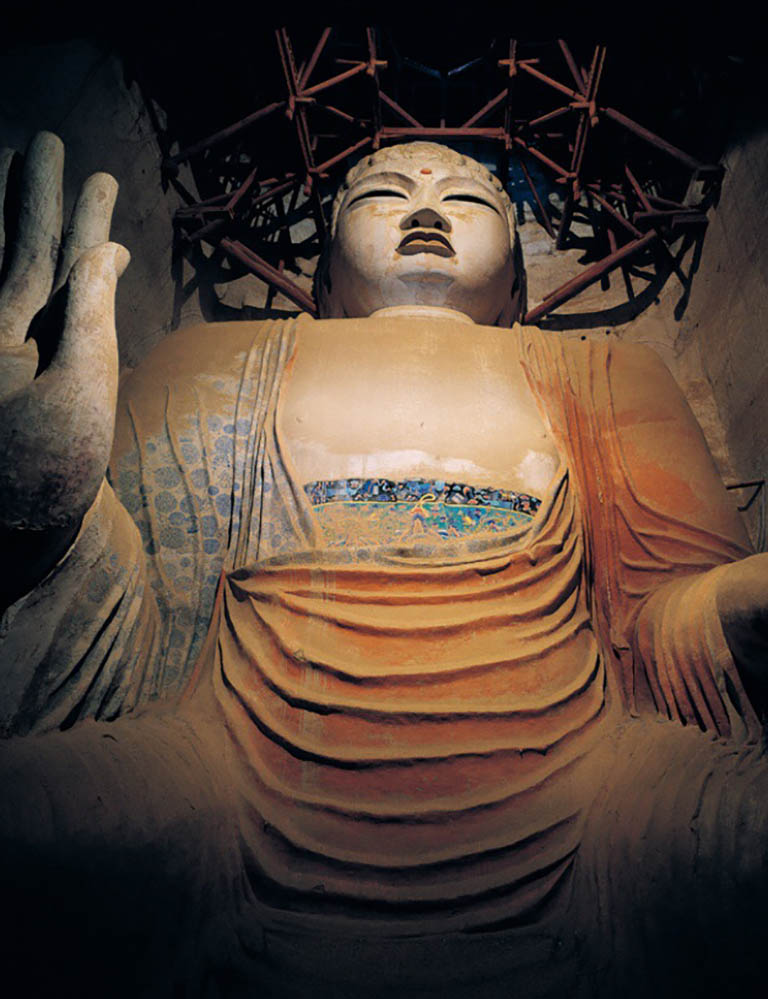
• Tyepe: World Heritage Sites, Religious Sites, Historic Sites, Caverns & Caves, Sights & Landmarks
• Ticket: ¥238 (April ~ November), ¥140 (December ~ Next March)
• Best Time to Visit: All year round
• Recommended Visiting Time: 3 hours ~ half a day
• Location: Dunhuang, Gansu, China
Mogao Caves (Mogao Grottoes), carved on the cliffs of Mingsha Mountain in the southeast of Dunhuang City, is another brilliant UNESCO World Cultural Heritage site on the Silk Road. It’s the top of China’s Four Greatest Buddhist Grottoes and the largest and best-preserved Buddhist art treasury in the world with the title of “the Louvre of the East”. In the 235 Buddhist cave, there are more than 2000 well-preserved exquisite painted sculptures and 45,000-square-kilometer delicate murals and some Buddhist Sutras. In different caves, you can admire various Buddhist statues and paintings created in different dynasties, symbolizing different Buddhist contents and arts. They are fantastic examples of Buddhist culture and history in China, that perfectly recorded the spread of Buddhism in China and the successful fusion of religious arts and Chinese traditions.
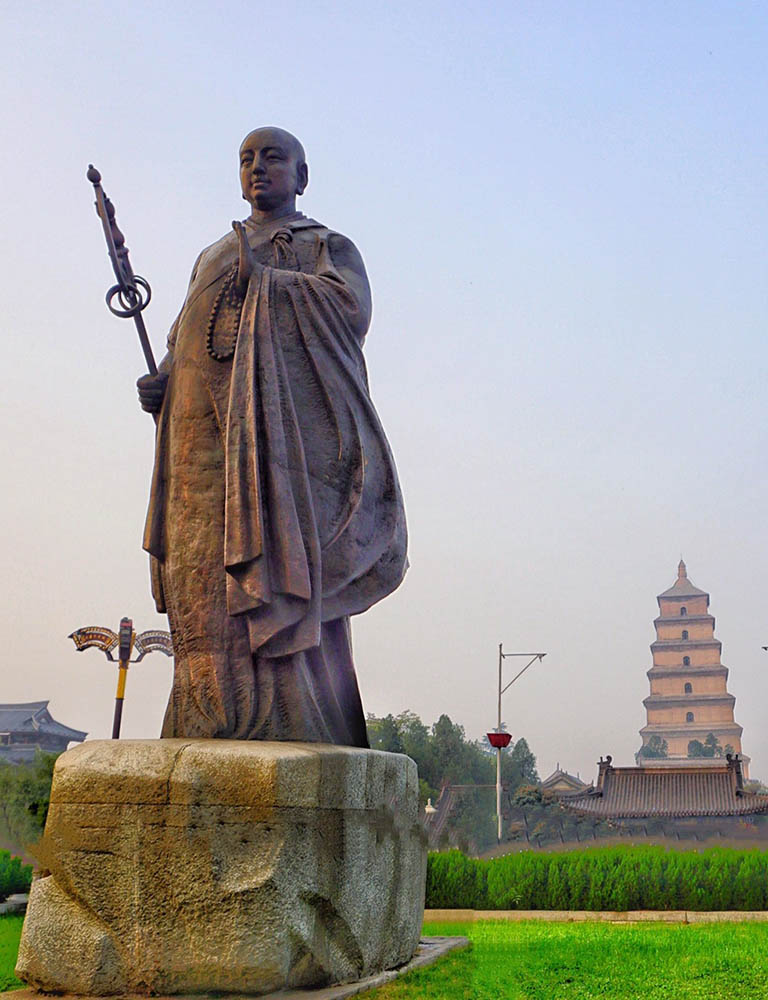
• Tyepe: Historic Site, Religious Site
• Ticket: ¥50 ( Temple Entry), ¥30(Pagoda Entry)
• Best Time to Visit: All year round
• Recommended Visiting Time: 2 hours
• Location: All year round
Daci’en Temple was constructed in 652 AD of the Tang Dynaty to store the Buddhist Sutras and statues which were brought back from India via the Silk Road by Tang Sanzang, a famed monk. Later, Tang Sanzang translated Buddhist scriptures and established Mahayana Buddhism there, making Daci’en Temple a sacred Buddhist center during the Tang Dynasty. To better preserve Buddhist statues and relics, Tang Sanzang took 2 years to build the Giant Wild Goose Pagoda, funded by the imperial. The original pagoda was a five-storey brick pagoda with a 60-meter height, an imitation of India’s Buddha Gaya Stupa. Emperor Gaozong of the Tang Dynasty adjusted the Pagoda into nine layers. The pagoda got several reconstruction and its final edition was made in the Ming Dynasty in 1604. Now Giant Wild Goose Pagoda, with a height of 64.5 meters and 25.5 meter long base, is the oldest and biggest square pavilion brick tower of the Tang Dynasty and a outstanding Buddhist architecture combining ancient Indian style buildings and Chinese traditional elements. It’s one of the symbols of Xian and a noted Buddhist sanctuary for Silk Road adventurers.
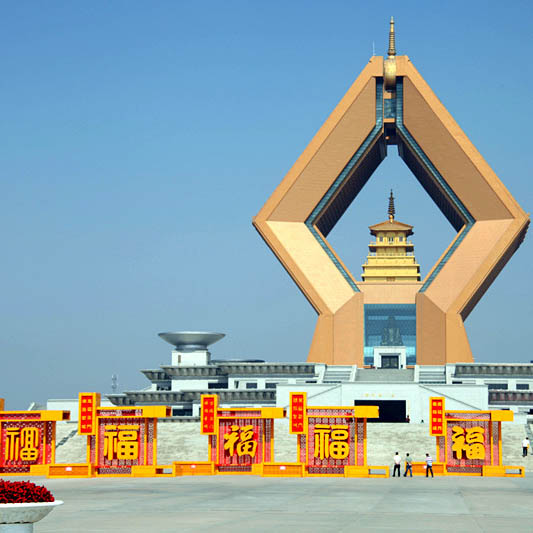
• Tyepe: Religious Site, Historic Site, Speciality Museums
• Ticket: ¥100
• Best Time to Visit: All year round
• Recommended Visiting Time: 3 hours
• Location: Famen Town, Fufeng County, Baoji City, Shaanxi, China
Situated in the Baoji northeast suburb and 1.5 hours’ drive from Xian, Famen Temple is a world-famous Buddhist pilgrimage shrine where stores the finger relics of Sakyamuni. People worship it as the ancestral temple of all ancient temples in Guanzhong region and used to call it the Temple of King Asoka. It was built in the late Eastern Han Dynasty with a long history of over 1,800 years, after the pagoda which worships the holy finger relics of Sakyamuni. The current name was given by Emperor Gaozu of the Tang Dynasty in 618. Many emperors of the Tang Dynasty visited the temple, honored it as a royal temple and offered many rare Buddhist relics. Today Famen Temple has been expanded to be a huge cultural area with a huge new pilgrimage square, avenue and some other buildings. Highlights include the 13-storey pagoda and the underground palace - the oldest, largest and most sacred underground stupa palace in the world. Over thousands of precious Buddhist relics have been discovered in the palace, including Buddha bones, statues, scriptures, musical instruments, gold and silver wares, insensory, coloured glaze wares, porcelains, silks, etc. The Buddhist treasures and historic relics stand at the highest level of Buddhism and handicraft of the Tang Dynasty and make Famen Temple an unparalleled sanctum along the Silk Road.
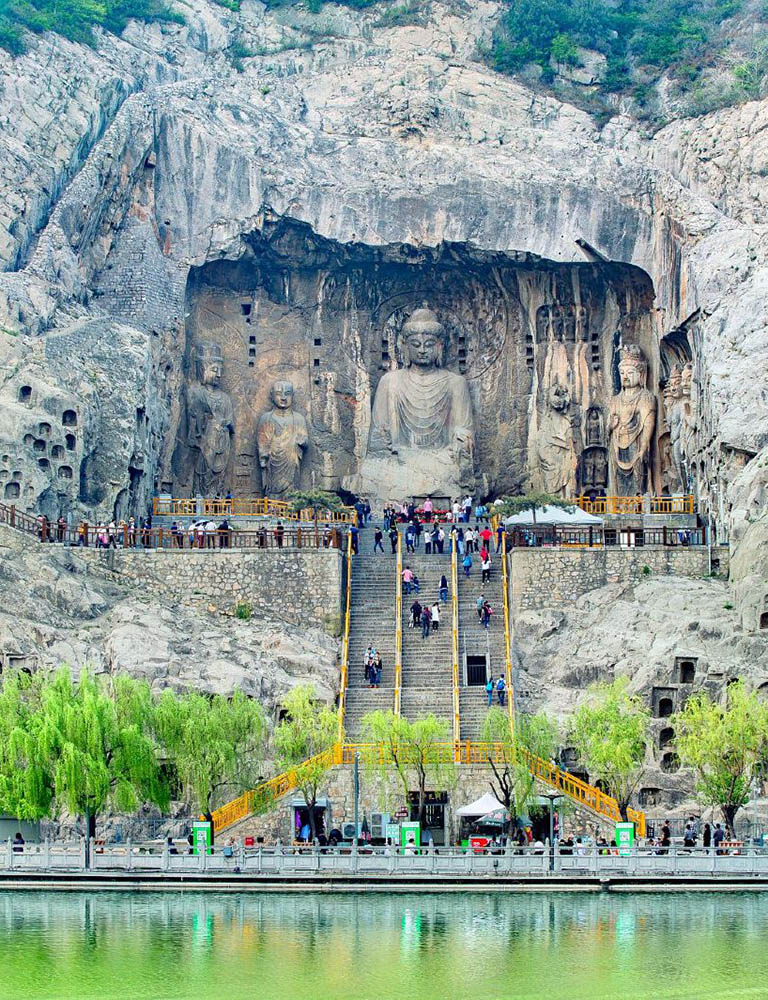
• Tyepe: World Heritage Sites, Historic & Religious Sites, Buddhist Spots
• Ticket: ¥90
• Best Time to Visit: All year round
• Recommended Visiting Time: Half a day
• Location: No.13, Middle Longmen Road, Luolong District, Luoyang, Henan, China
Longmen Grottoes is one of the Four Greatest Buddhist Grottoes in China and a UNESCO World Cultural Heritage property. It has the largest number and scale of stone carvings in the world that earns itself the best work of Chinese stone carving art. On the riverside steep cliffs, more than 2000 Buddhist caves and a hundred thousand statues are scattered. The site was said to be excavated in the Northern Wei Dynasty (end of 5th century), thrived in the Tang Dynasty and declined in the late Qing Dynasty, spanning almost 1,400 years, the longest in the world. As a masterpiece of Buddhist spread and fusion, Longmen Grottoes stands out as the only example of Buddhist grottoes carved by real royal figures. The giant Vairocana Buddha, noted as “the Oriental Mona Lisa”, is a work based on the appearance of Express Wu Zetian. Through the colors of some Buddhist statues that have faded, their life-like looks and rich and elegant Buddhist factors still shine and display cultural exchange between the west and the east.
If you’re interested in Buddhism culture, history and art in China, there are many other Buddhist caves along the Silk Road you can explore, such as Datong Yungang Grottoes, Bingling Temple Grottoes, etc.
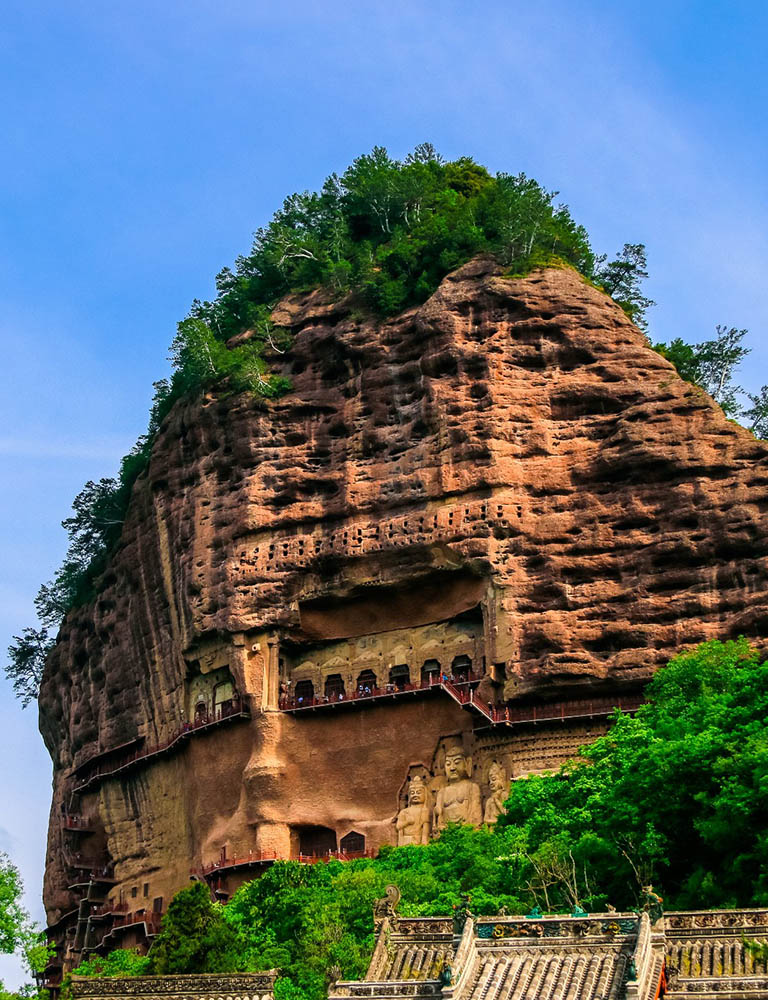
• Tyepe: Historic & Religious Sites, Buddhist Spots
• Ticket: ¥80
• Best Time to Visit: All year round
• Recommended Visiting Time: Half a day
• Location: Maiji District, Tianshui, Gansu, China
Maijishan Grottoes, together with Longmen Grottoes, Yungang Grottoes and Dunhuang Groggoes, are known as the "Four Greatest Grottoes in China." Caves were chiseled on a hill shaped like a stack of wheat. The ancient artisans carved more than 7800 Buddhist statues with different colors and sizes. The largest statue, Dongyan Giant Buddha, has a height of 15.8 meters.
Maijishan Grottoes chiseled on a wheat stack-shaped hill in Tianshui is another member of the Four Greatest Buddhist Grottoes in China as well as a UNESCO World Heritage site. Because the place held a strategic location on the ancient Silk Road, Buddhist caves here were influenced by both western countries and central China, and naturally formed a unique art style of sculptures and murals. Carved in the later Qin Dynasty, Maijishan Grottoes experienced a long-period construction history until the Qing Dynasty for about 1,600 years. Now there are 222 caves, nearly 4,000 Buddhist sculptures and a thousand square meters paintings remain on the steep hill. The large amount of clay figurines gets Maijishan Grottoes name of “Oriental Sculpture Gallery”. It’s an interesting trip to climb up along the hanging wooden paths to appreciate different kinds of Buddhist clay sculptures and learn splendid Buddhist art, architecture and culture of ancient times.
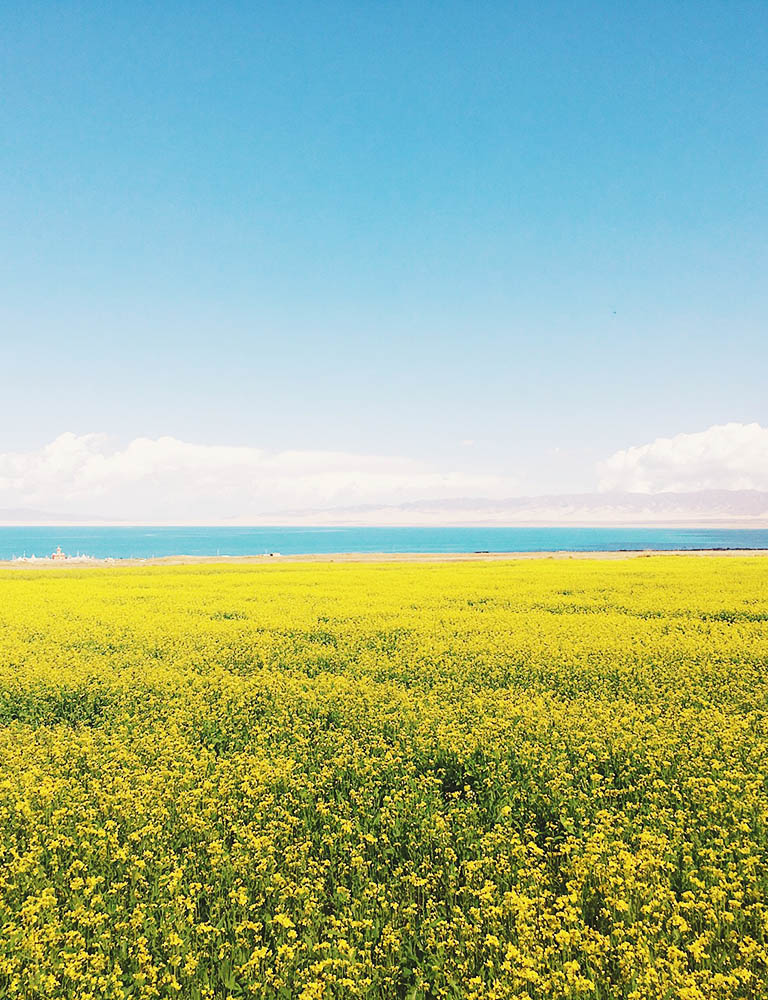
• Tyepe: Lakes, Islands, Nature & Parks
• Ticket: ¥90
• Best Time to Visit: May ~ October, especially in July ~ August
• Recommended Visiting Time: 1 ~ 2 days
• Location: Gonghe County, Hainan Tibetan Autonomous Prefecture, Qinghai, China
Located in the northeast Qinghai-Tibet Plateau, Qinghai Lake, (Kokonor Lake means blue sea in Tibetan and Mongol), is the largest saltwater lake in inland China. As one of the most popular natural tourist destinations with the very most beautiful natural scenery in northwest China’s Silk Road regions, Qinghai Lake presents a superb landscape of peaceful pure blue water, magnificent snowy mountains afar, vast grasslands and lovely golden sea of rape flowers by lake. Erlangjian Scenic Area is the core area in Qinghai Lake where you can walk around, make a boat ride and a biking trip to enjoy the natural beauty of Qinghai Lake. When rape flowers blossom on the shores from mid-June to August during summer, Qinghai Lake enters the most beautiful moment and the peak season. Cycling races around the lake are held annually in summer as well.
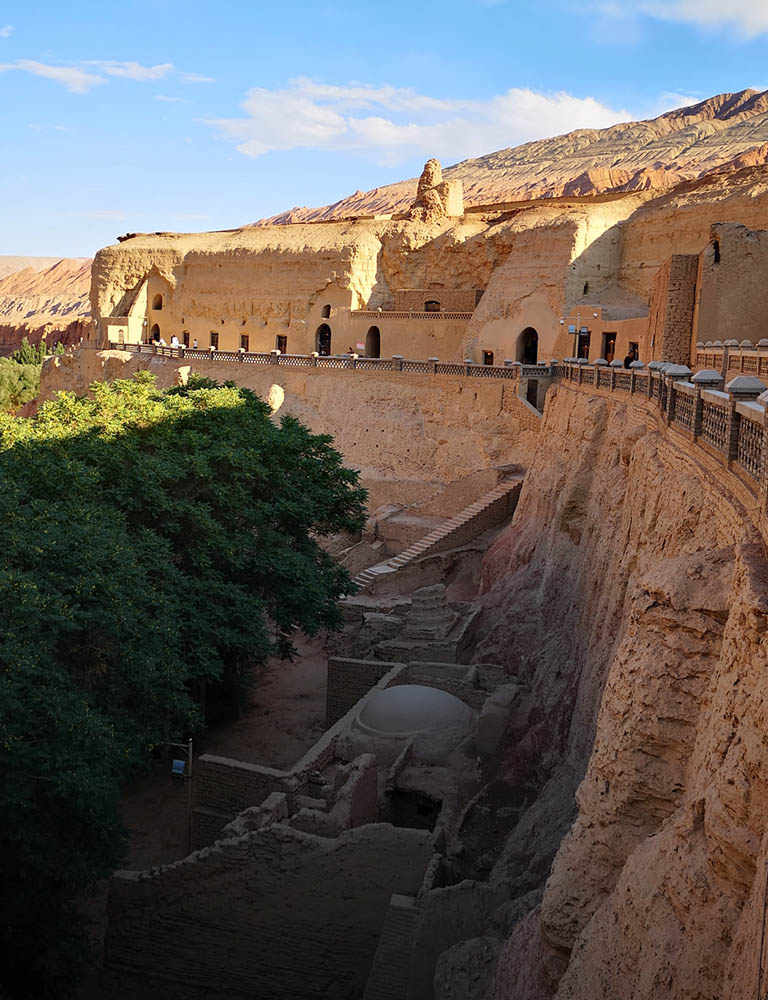
• Tyepe: Buddhist Grottoes, Murals, Cultural & Historic Sites
• Ticket: ¥40
• Best Time to Visit: May ~ October
• Recommended Visiting Time: 1 ~ 2 hours
• Location: Flaming Mountain Area, Gaochang District, Turpan, Xinjiang, China
Distributed on a cliff at the foot of Flaming Mountains and located about 38 km (50 minutes’ drive) from Turpan city, Bezeklik Thousand Buddha Caves is one of the major Buddhist grottoes in Xinjiang and a vital historic recorder of Buddhist history on the ancient Silk Road. Bezelkik Caves started carving from the mid-5th century during the Gaochang Kingdom, and went through Tang and other dynasties for nearly 700 years. It served as the religious center of Gaochang Kimgdim for quite a long time. After Islamism spread into Turpan and the political center changed, Buddhism and Bezeklik Thousand Buddha Caves gradually declined. However, the prosperous Buddhist art and culture has been partly preserved in Bezeklik Caves. Among all the Buddhist caves of Gaochang Kingdom, Bezeklik Caves remains the largest number of caves (83 caves) and richest murals (over 1200-square meter wall paintings). The surviving murals still have bright colors and abundant contents, revealing extraordinary Buddhist arts, old techniques and a wonderful mixture of different cultures. Cave No. 18, 29 and 48 are the oldest ones built during the later Northern and Southern Dynasties (420-589). Cave No.20 painted a portrait of the King and Queen of Gaochang Kingdom. Cave No. 38 displays the living scene of the ancient Manichean.
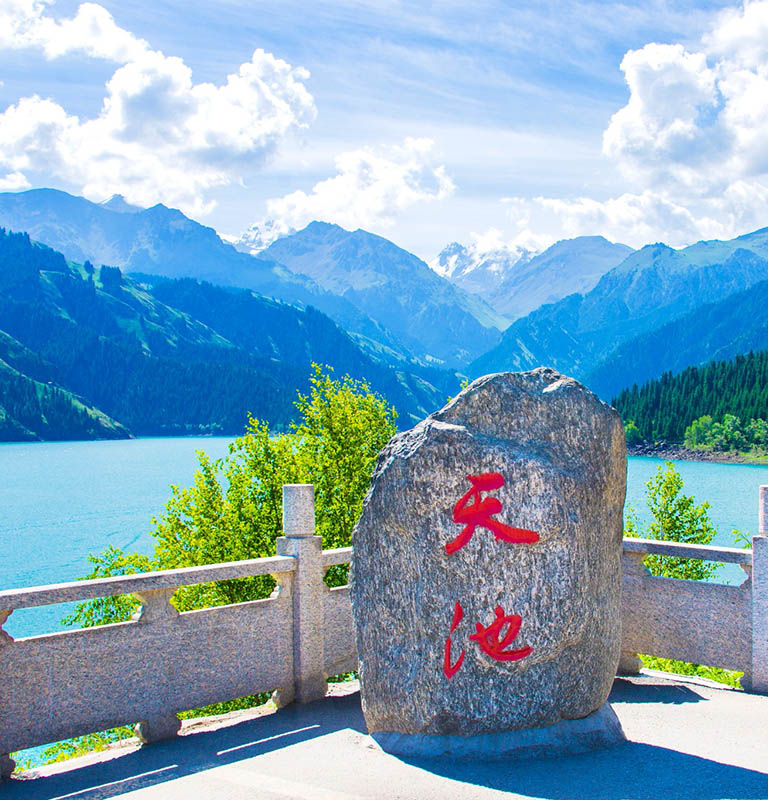
• Tyepe: World Natural Heritage Site, Bodies of Water, Points of Interest, Landmarks, Lookouts, Nature & Parks, Mountains
• Ticket: ¥95 (April ~ October); ¥45 (November ~ March Next Year); shuttle bus: ¥60 (round-trip)
• Best Time to Visit: May ~ October
• Recommended Visiting Time: Half a day ~ one day
• Location: Fukang City, Changji Hui Autonomous Prefecture, Xinjiang, China
Heavenly Lake of Tianshan Mountains (Tianshan Tianchi Lake) Scenic Area is one of the top natural spots and most famous landmarks of Xinjiang and a UNESCO World Natural Heritage site. The scenic area is just 1 hour’s drive from Urumqi. The calabash-shaped Heavenly Lake on the hillside of Bogda Peak is hailed as “a pearl in the Tianshan Mountains”. It was called Jade Pool where the mythical Western Mother Goddess lives. So many spots inside, like temples, small lakes, are related to this famous renowned figure. The most impressive sight of Heavenly Lake goes to the serene turquoise lake encircled by multiple ranges of hills which are densely covered by primitive forests. Majestic snow-toped Bogda Peak standing in the distance and together with the hills leave a stunning reflection on the Heavenly Lake. Depending on your time and fitness, you can try a cruise on the lake, walk around or even take a cable car to a higher mountain to catch a panoramic view of the lake and surrounding woods and peaks.
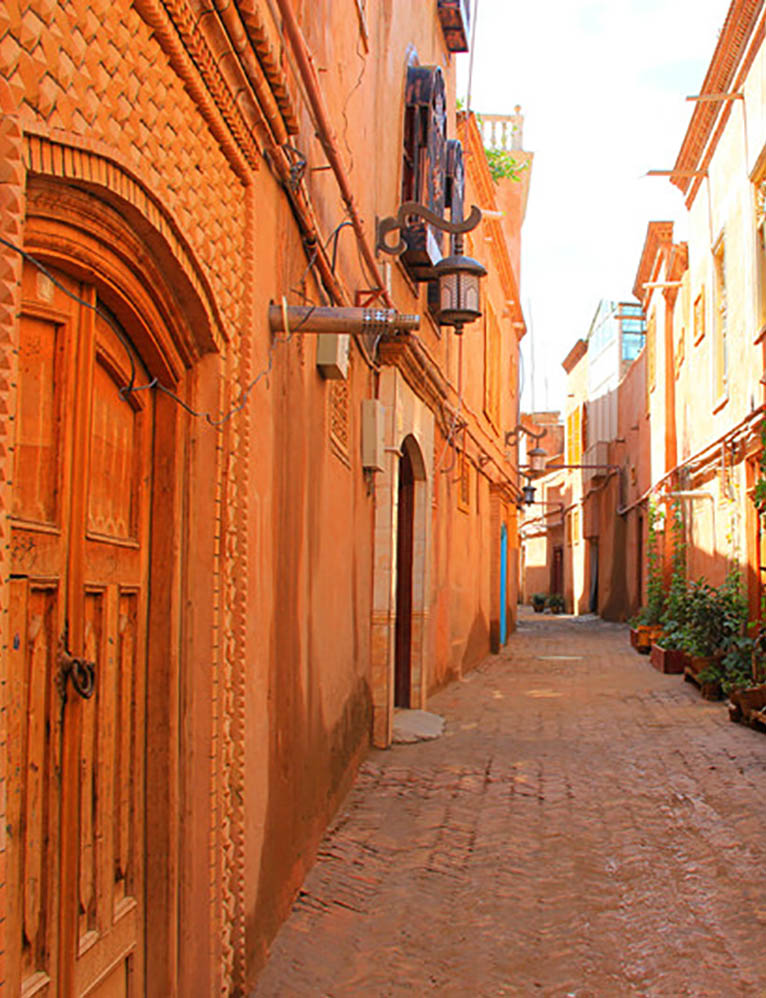
• Tyepe: Old Cities, Cultural & Historic Sites
• Ticket: Free
• Best Time to Visit: All year round
• Recommended Visiting Time: 2 hours ~ 1 day
• Location: Kashagr City, Kashgar Prefecture, Xinjiang, China
Kashgar Old Town (Kashgar Ancient City) in downtown Kashgar is the heart and No.1 landmark of Kashgar. With a time-honored history of over 2000 years, the old town witnessed the past of Kashgar and now this city shows the authentic and vitality of present Kashgar. Kashgar Old Town is criss-crossed with streets and lanes, and there are thousands of old earthy, wooden and brick houses towering on both sides. It’s the only Islamic maze-like city eighborhood in China. Visitors prefer to describe it as a living painting of Xinjiang’s Uygur folk customs. Don’t worry about getting lost. On the contrary, it’s great fun to take an aimless stroll through the alleys, enjoy the artistic buildings, meet the lovely children and see ethnic daily life, observe local handicraftsmen make fine products in different shops, taste a variety of local food and snacks, enjoy tea time leisure in the Century-old Tea House, etc.
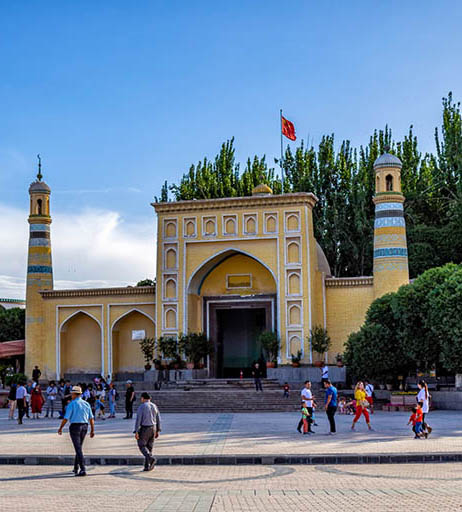
• Tyepe: Religious Sites, Historic & Cultural Sites, Landmarks
• Ticket: ¥45 for Tourists; Free Admission for Muslims
• Best Time to Visit: April ~ October
• Recommended Visiting Time: 1 hour
• Location: Kashgar Old Town, Kashgar City, Kashgar Prefecture, Xinjiang, China
Built in 1442, Id Kah Mosque is the biggest mosque in Xinjiang and China. The mosque is an outstanding Uyghur traditional architectural complex showing both unique ethnic styles and strong religious characters. Id Kah Square outside is a big public place for recreation, where many local old men and children like to enjoy sunbath and leisure time. The front gate of Id Kah Mosque is elegant and impressive with light yellow color and Islamic symbolic towers. The inner part is a quiet and pretty courtyard with lecture halls and prayer halls. Religious decorations are wildly used. Every day, there are lots of pilgrims worshipping in the mosque and the scene is surprisingly spectacular during holy Islamic festivals like the Eid ul-Fitr (End of Ramadan), Eid ul-Adha.
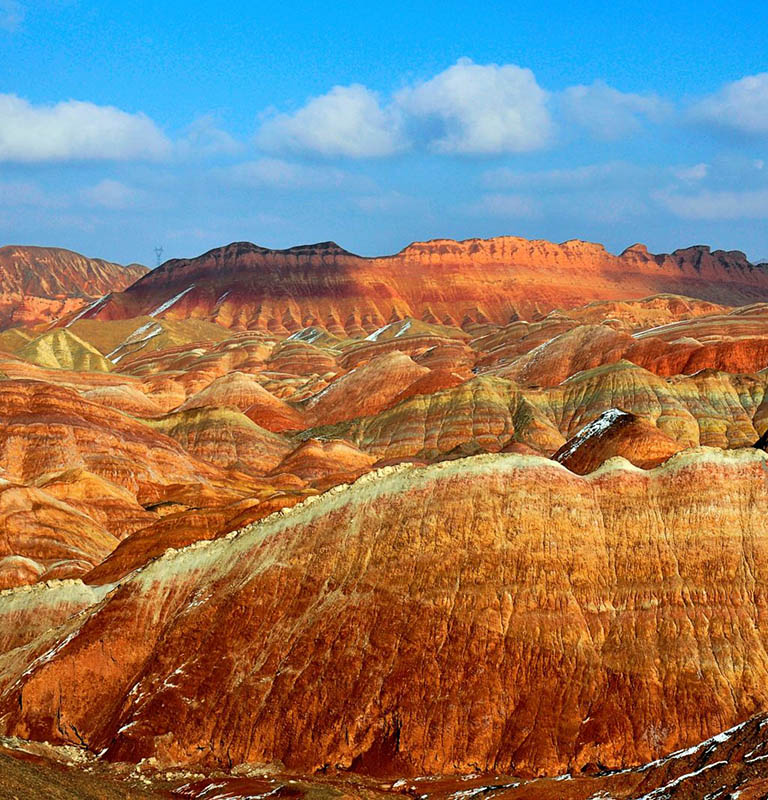
• Tyepe: Geologic Formations, Nature & Parks
• Ticket: ¥74 (including sightseeing bus)
• Best Time to Visit: June ~ September
• Recommended Visiting Time: Half a day
• Location: Nijiaying Nantaizi village, Linze County, Zhangye, Gansu, China
Northwest China is full of natural wonders and Zhangye Danxia Landform, the very famous Rainbow Mountains, is one of the most famous and amazing examples. Formed by various natural forces, Zhangye Danxia Landform presents a breathtaking landscape with boundless hills in iridescent colors. They’re superlative geological miracles and an impressive visual feast of nature. In the two scenic areas - Colorful Danxia and Binggou Danxia of Zhangye Danxia Landform Geographical Park, you will get great chances to view Danxia hills in different colors and shapes. When walking and looking at these multi-colored Danxia mountains, you will feel like entering a real fairyland.
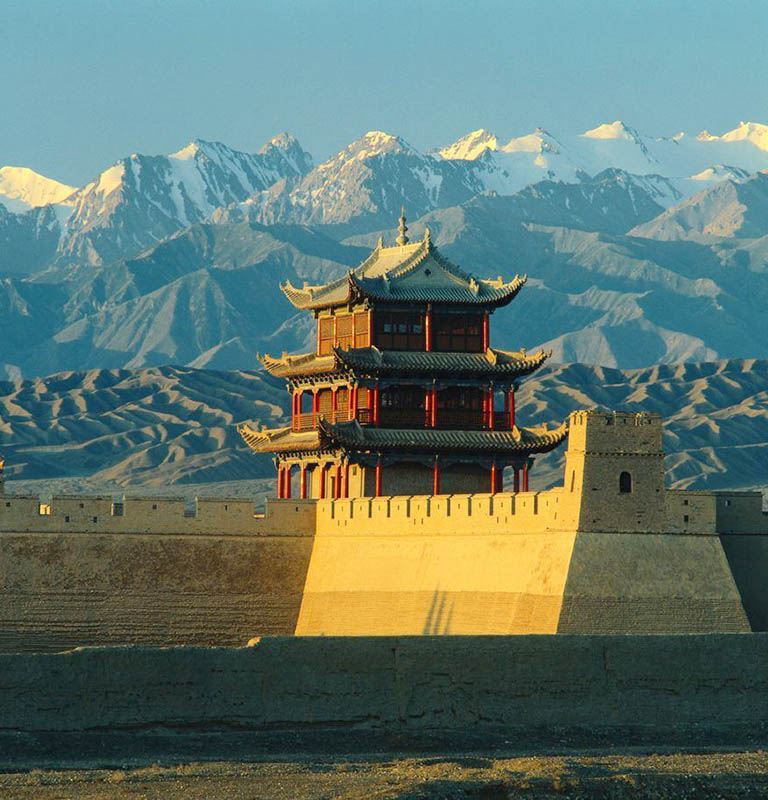
• Tyepe: Ancient Ruins, Sights & Landmarks
• Ticket: ¥120 (May ~ Octiber) / ¥90 (November ~ April)
• Best Time to Visit: May ~ October
• Recommended Visiting Time: 2 hours
• Location: South Guancheng Road, Yuquan Town, Jiayuguan, Gansu, China
Jiayuguan Pass, located about 20 minutes’ drive (8 km) from Jiayuguan City, the middle of Hexi Corridor, is the west starting point of the Great Wall of the Ming Dynasty and China’s largest remaining Great Wall pass and frontier. Jiayuguan Pass was constructed in 1372 AD during the Emperor Hongwu of the Ming Dynasty. The pass connects the Overhanging Great Wall in the north and the First Mound in the south, once served as a throat transit of Central China and the Western Regions on the Silk Road. As a crucial frontier, Jiayuguan Pass is made up of three parts- outer city, inner city and moat and battle field. Time flies. A visit to Jiayuguan Pass helps you imagine the ancient battlefield and enjoy the grand vision of the Qilian Mountains behind it.
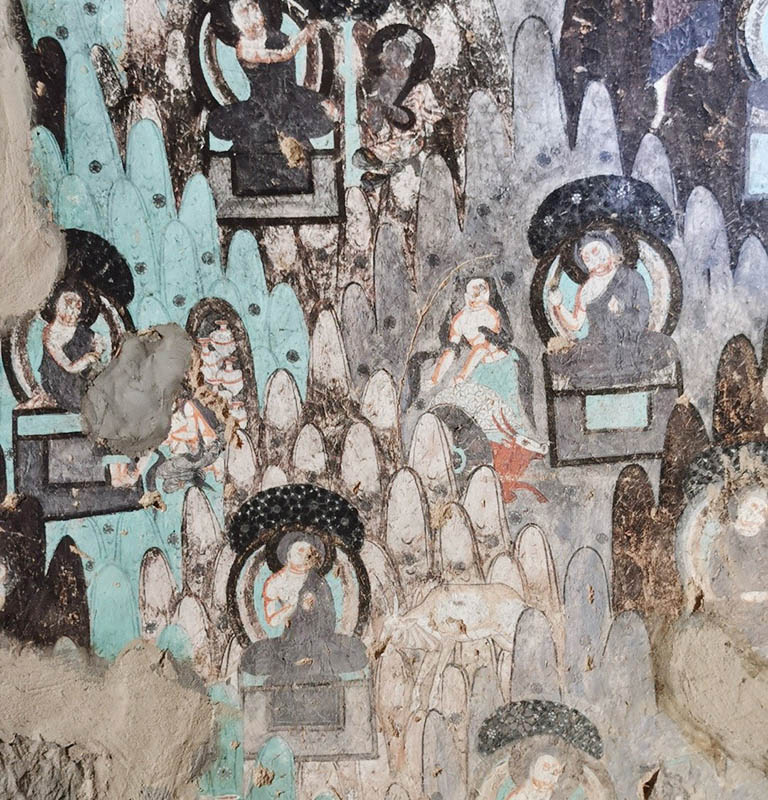
• Tyepe: Historic & Religious Sites • Caverns & Caves
• Ticket: ¥70
• Best Time to Visit: May ~ June, September ~ October
• Recommended Visiting Time: 2 hours
• Location: Kizil Village, Baicheng County, Aksu Prefecture, Xinjiang, China
Kizil Caves scattered on the north bank of the Muzart River, Baicheng, is the biggest and best preserved Buddhist grottoes in Xinjiang and the oldest one in China. The caves were excavated in the 3rd century during the Qiuci Kingdom, almost 300 years earlier than Dunhuang Mogao Caves and its construction lasted until the 9th century. Qiuci Kingdom was the religious center of the Western Regions and Kizil Caves got a lot of attention and hard work. Now Kizil Caves has 236 numbered caves with around ten thousand square meters murals, so it is honored as the cradle of Qiuci Kingdom’s grottoes art and a fossil of Buddhism’s introduction. Only several caves are open to visitors. The long history, rich content and distinguished arts, style and colors are still very educational and fulfilling. The highlights of Kizil Caves are the central pillar cave structure, unusual painting pigments, diamond-shaped Buddhist story paintings and rich contents of the Buddhist world, historical life scenes, etc.
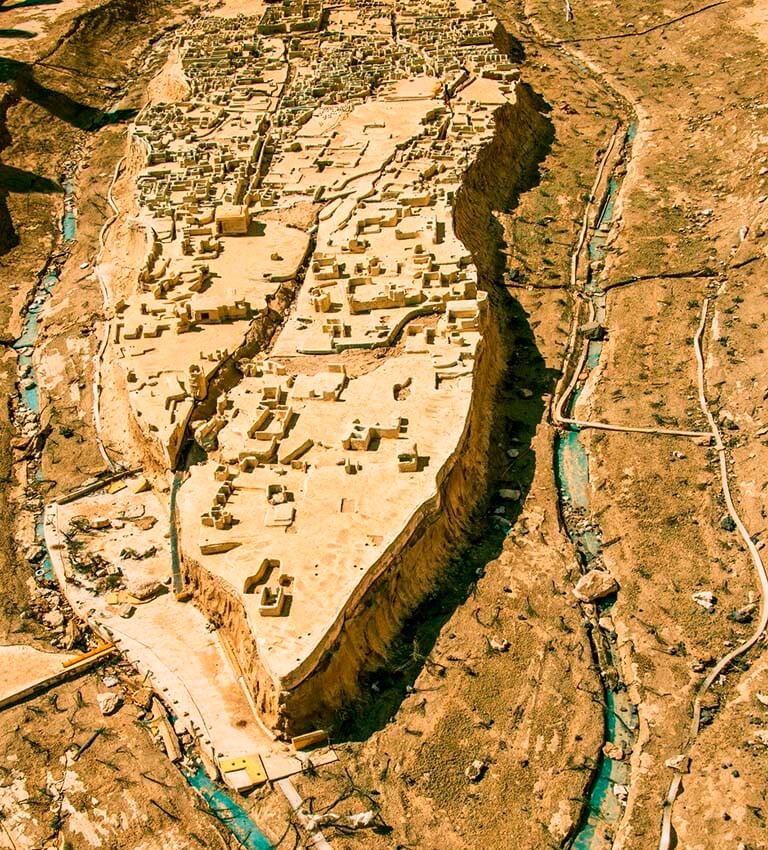
• Tyepe: Historic Sites, Ancient Ruins
• Ticket: ¥95 (including the museum and tourist bus)
• Best Time to Visit: May ~ October
• Recommended Visiting Time: May ~ October
• Location: Jianggelemaisi Village, Ya'er Country, Turpan, Xinjiang
Jiaohe Ancient City was the ancient capital of Cheshi Kingdom of the Western Regions with over 2000 years of history. Built during the 2th century BC, it was the most important military and political institution in the Western Regions during the Tang Dynasty. However, continuous wars let the city ruined and abandoned from the 9th to 14th century. The extant leaf-shaped ruins are the most complete city ruins in China and the largest, oldest and best preserved earth constructed city in the world. It has been listed as an UNESCO World Heritage site together with Gaochang Ancient City and other sites on the Silk Road.
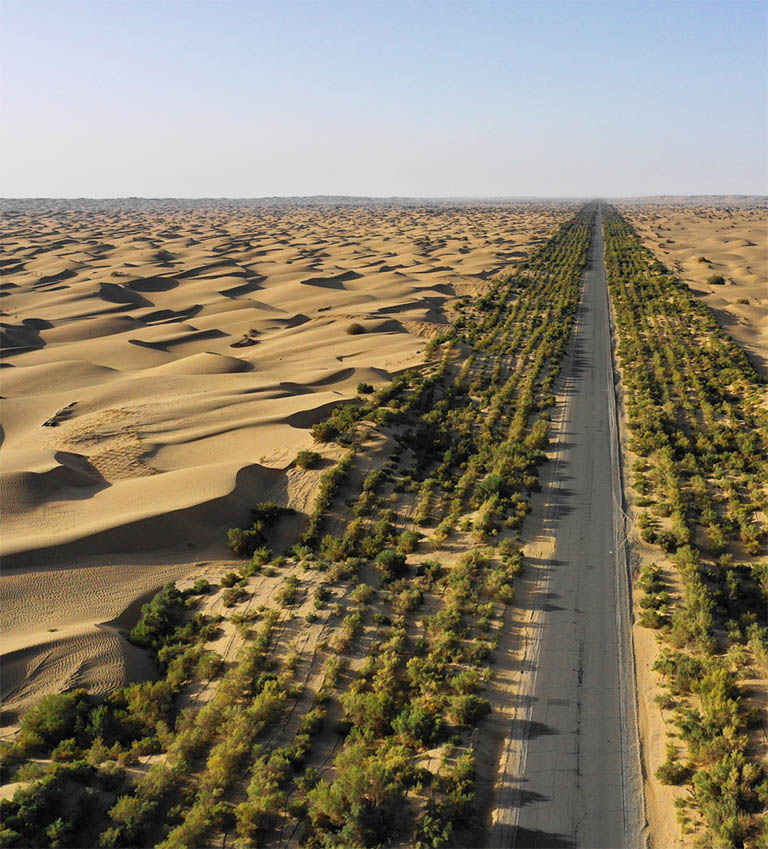
• Tyepe: Desert, Lakes, Geologic Formations, Nature & Geoparks
• Ticket: Free
• Best Time to Visit: Late October ~ Mid-November
• Recommended Visiting Time: 1 ~ 2 days
• Location:The Center of Tarim Basin in southern Xinjiang, China
Extending a huge area of 337600 square kilometers in the Tarim Basin, Southern Xinjiang, Taklamakan Desert is China’s largest desert and the second largest drifting desert and 10th largest desert in the world. Featuring different beautiful sand dunes and large scale, Taklamakan Desert is mysterious, charming and challenging for adventurers. The best and safest way to view Taklamakan Desert is making a road trip on a desert highway. Tarim Desert Highway between Luntai and Mingfeng is the most scenic section, because, during autumn, you may view golden populus euphratica forests miraculously grown in the wild dry desert. Besides, you can enjoy an awesome desert drive and see sand hills of artistic curves, feathers and other shapes stretching along the highway.
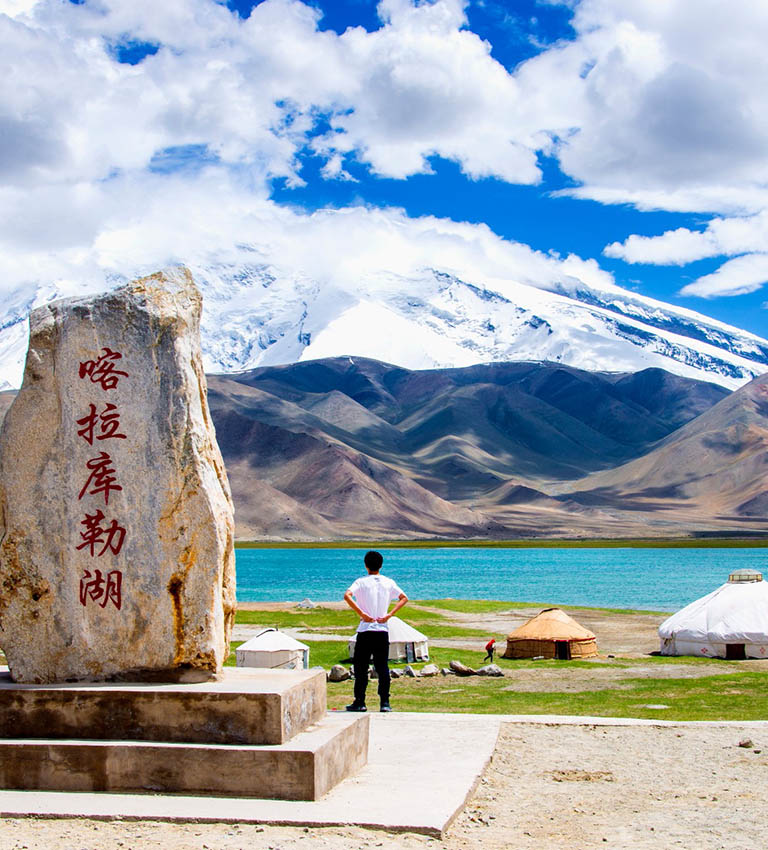
• Tyepe: Lakes, Nature & Landscape
• Ticket: Free
• Best Time to Visit: May ~ October
• Recommended Visiting Time: 1 ~ 2 hours
• Location: Akto County, Kizilsu Kirgiz Autonomous Prefecture, Xinjiang, China
Karakul Lake is an alpine glacial moraine lake silently lying at the foot of Muztagh Ata (elevation: 7,546m), the very famous “Father of the Ice Mountains’. When driving about 190 km (4 hours) from Kashgar to Tashkurgan on the Karakoram Highway (China-Pakistan Friendship Highway), the small Karakul Lake is a highlight and must-see spot. The sapphire lake is surrounded by majestic snowy mountains and grasslands. On a good day, snow-topped Muztagh Ata and nearby Kongur Tagh (7649 m) and Kongur Tiube (7530 m) - three symbols of Pamirs will have fabulous reflections in the Karakul Lake, providing an attractive sight with lakeside grasslands and brown mountains in the middle. You can take your time to walk around or ride a horse to enjoy the Karakul Lake and Muztagh Ata.
Major Destinations to Go: Xian, Luoyang, Dunhuang, Zhangye, Jiayuguan, Lanzhou, Qinghai, Urumqi, Turpan, Kashgar, Kucha, Hotan, Tianshui, Ningxia...
Top Tourist Attractions to Visit: Xian Terracotta Warriors, Dunhuang Mogao Caves, Zhangye Danxia Landform - Rainbow Mountains, Qinghai Lake, Heavenly Lake, Jiaohe Ancient City, Kashgar Old Town, Karakul Lake...
Best Time to Go: Generally, months from April to October are the best time, because the temperature is moderate and pleasant, the weather is good and the natural scenery is the most beautiful during this period.
The ancient Silk Road is a long tourist travel route involving lots of Chinese destinations, mostly located in Northwest China. A Silk Road travel can be flexibly customized according to travelers’ length of vacations, departure city, individual preferences and budget. It can take a few days to a few weeks and months.
If you have a tight schedule with only several days (4 ~ 5 days), you’re advised to make a brief Silk Road tour from the starting point - Xian, and visit Luoyang nearby or Dunhuang, the legendary treasury of Buddhist art, history and culture. If you have visited Xian and would like a deeper exploration, then Gansu’s Hexi Corridor (Zhangye, Jiayuguan and Dunhuang) - essence of ancient Silk Road is the best recommendation and a classic trip takes about 6 days.
☛ 6 Days Zhangye Jiayuguan Dunhuang Discovery Tour
☛ 5 Days Silk Road Tour from Xian to Dunhuang by Flight
☛ 5 Days Luoyang Xian Tour by Train
Travelers with 7 ~ 8 days can visit more Silk Road destinations. You can explore the Hexi Corridor with neighboring Qinghai, enjoy beautiful Qinghai Lake and other stunning landscapes and cultures, or travel farther to Xinjiang, unveil the mysterious Western Regions in top destinations - Turpan, Urumqi and Kashgar. Depending on your pace, you can even take some side trips, such as travelling to Karakul Lake from Kashgar.
☛ 7 Days Miraculous Land Tour from Dunhuang to Zhangye Xining
☛ 8 Days Classic Xinjiang Tour including Urumqi Turpan Kashgar Tashkurgan
A holiday of 10 ~ 15 days and a longer length is suitable to cover major destinations along the Silk Road in China. You can flexibly arrange an itinerary based on your interests. The most classic Silk Road tour covers Xian, main destinations in Hexi Corridor and Xinjiang, and takes just 10 days. Qinghai and Ningxia are popular regions for an in-depth Silk Road adventure. If time allows, you can visit the holy land of Tibet (Lhasa, Shigatse, Mount Everest, Mt.Kailash...) which has impressive Buddhist and Tibetan culture and plateau vista, and other destinations in China to experience the vast and diversity of China.
☛ 10 Days Classic Silk Road Tour (Xian/Dunhuang/Turpan/Kashgar)
☛ 11 Days In-depth Wild Silk Road Adventure Tour
☛ 12 Days Epic Silk Road Tour including Qinghai Lake and Zhangye Danxia
☛ 15 Days Classic Ancient China Silk Road Tour with Bullet Train Experience
☛ 19 Days Silk Road & Tibet In-depth Tour
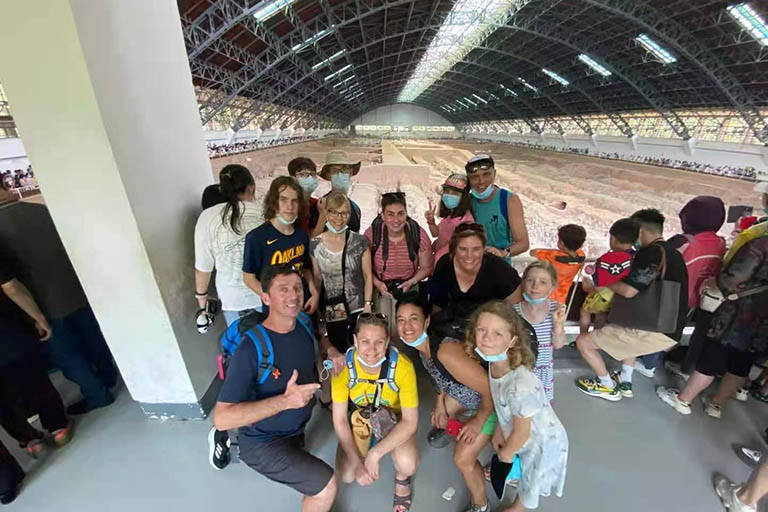 Our customers Cameron Family from New Zealand visited Terracotta Warriors in Xian in July, 2021.
Our customers Cameron Family from New Zealand visited Terracotta Warriors in Xian in July, 2021.
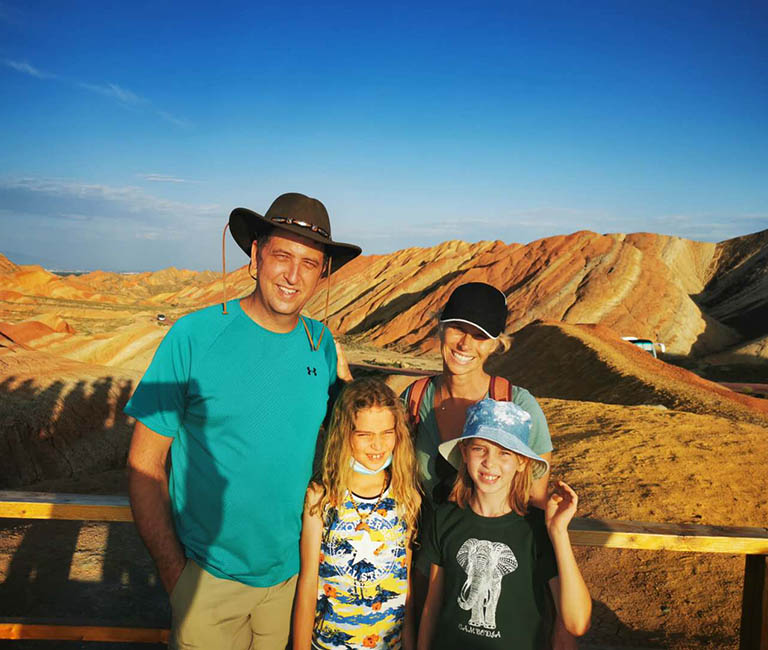 Our customers Erin family from USA visited Zhangye Danxia Geopark in Gansu in August, 2020.
Our customers Erin family from USA visited Zhangye Danxia Geopark in Gansu in August, 2020.
 Kashgar Old Town ©骆小洛的世界 / mafengwo
Kashgar Old Town ©骆小洛的世界 / mafengwo
Since most destinations along the ancient Silk Road are located in the remote Northwest China and some attractions are scattered far from the cities, it’s best to travel with a local professional travel agency, like China Discovery, to enjoy a Silk Road adventure. We will not only help you plan a suitable travel itinerary, but also arrange all the services you need, including tour guides and drivers, transfer vehicles, hotels and tickets, meals, etc., to make sure you make an educational cultural and historical travel with relaxing visual enjoyment. You can find more inspiration from our Most Popular China Silk Road Tours or contact us to customize a special one.